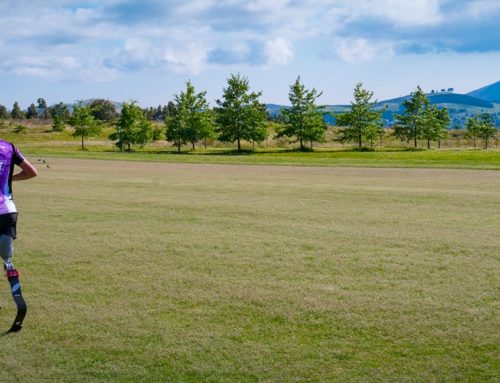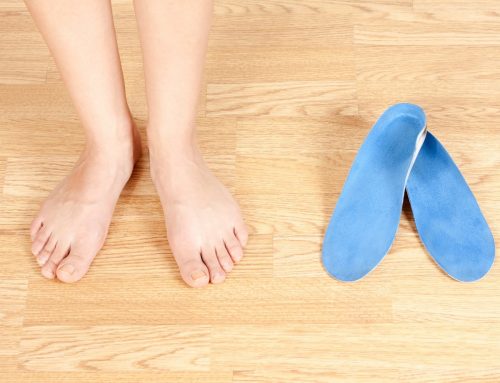Multiple Sclerosis- Orthosis Use for Supporting Gait
What is MS?
Multiple Sclerosis is a chronic, inflammatory neurological condition of the central nervous system (CNS) that affects more than 25000 Australians. Nerve impulses from the brain, spinal cord and optic nerve are affected due to lesions or scarring occurring in the CNS. These manifest in a wide array of symptoms that can vary significantly from person to person. The course of MS is unpredictable and highly variable, generally affecting those between the ages of 20-40, with approximately three times as many women living with MS as men.
There are 3 categories/ subtypes of MS:
- Relapsing-Remitting
- Secondary Progressive
- Primary Progressive
What to expect during an orthotic assessment
MS manifests in a multitude of ways, and is often dependant on where the lesion or scarring occurs within the CNS. During an orthotic initial assessment, you should expect to have the clinician observe your presentation and symptoms, and along with your personal goals, use this assessment to determine which (if any) orthotic device/s is most suitable.
There are many presenting symptoms that a clinician will look out for when performing an initial assessment with a client with multiple sclerosis. Some of these include:
- Fatigue
- Fatigue is an extremely common symptom of MS with approximately 80% of people experiencing significant fatigue. This extreme tiredness or lethargy can have an immense impact on one’s physical and mental capabilities, and overall daily function. Many people with MS report that fatigue exacerbates other symptoms.
- Spasticity
- Refers to an abnormal increase in tone or tightness within the muscles.
- Weakness
- Weakness can occur due to lack of muscle use. Those with MS may find that their activity level decreases significantly due to the pain, fatigue or other symptoms that they experience. This can result in weakness and atrophy of the muscles. Muscle weakness can also occur due to damage to the nerve fibres in the brain and spinal cord. This damage interferes with the nerve signals being sent to the muscles ultimately inhibiting them from functioning correctly.
- Temperature sensitivity
- Heat sensitivity is another very common symptom associated with MS. Many people with MS experience worsening of other symptoms as a reaction to an increase in heat. Many people report a loss of vision, increased weakness, fatigue and even memory loss, due to changes in temperature. This may be caused via a rise in temperature due to a fever or cold, moving to warmer climate or even from having a hot shower.
- Impaired gait (walking)
- Gait deviations are prevalent among those with MS due to increased weakness and spasticity in the limbs. Foot drop is an extremely common presentation that we often observe during our gait assessments. These gait deviations impact speed, balance, endurance and energy expenditure, ultimately resulting in a gait pattern that is significantly taxing in the individual.
- Pain
Goals
It is important to work with your clinician to establish specific and attainable goals for your orthotic treatment. These will provide the foundations for determining which orthotic intervention will be most suited to your specific requirements and ambitions.
So what are your goals?
Below are some common goals associated with the management of multiple sclerosis:
- Control foot drop
- Foot drop is where the foot does not lift as your leg swings through during walking. It is important to reduce the impacts of foot drop in people with MS to minimise energy expenditure whilst walking. Providing control to footdrop additionally plays a major role in reducing risk of falls and increasing overall safety and function.
- Prevent falls
- Assist is improving balance and coordination, as well as reducing the incidence of gait deviations- which ultimately decreases falls risk
- Reduce energy expenditure
- Manage temperature sensitivity
So which orthotic intervention is right for you?
There are many orthotic devices available to assist in the management of MS. Traditional (solid/ articulated) ankle foot orthoses are widely accepted as an effective/ standard method of treatment for MS. However, alternative interventions such as Functional Electrical Stimulation (FES) and dynamic ankle foot orthoses (AFOs) are becoming increasingly popular.
- Dynamic AFO
- Dynamic AFOs are ankle-foot orthoses made from carbon fibre. Dynamic AFOs include a flexible carbon fibre strut that provides energy storage and return properties whilst walking. These properties provide push off and propulsion into swing, which can reduce the energy cost of walking and overall fatigue.
- As with standard AFOs, Dynamic AFOs maintain a suitable ankle position which controls foot drop and minimises the risk of tripping and falling.
- Dynamic AFOs are less encapsulating than traditional AFOs which can also assist in temperature regulation.
- FES
- FES devices generate low level electrical impulses that stimulate nerves to generate contraction of the muscle. These devices have the ability to target specific muscles at a specific time. To manage footdrop, the peroneal nerve is stimulated via the electrical impulses, as the user lifts their foot from the ground. This then activates the muscles that control the lifting (dorsiflexion) of the foot. This ultimately reduces the risk of tripping and falling.
- These devices consist of a leg cuff and electrodes that sit on the skin to provide the electrical stimulation. The low profile design is lightweight and far less cumbersome than a standard AFO; this is highly beneficial for people with MS as it allows them to better regulate their temperature and assists in minimising fatigue.
These are just two of many orthotic interventions that are available to assist in managing multiple sclerosis. It is recommended that with any orthotic device, physiotherapy should be incorporated into the treatment plan. This ensures that adequate training to safely and effectively use the device is provided, which ultimately allows you to get the most out of your new orthotic device, and work towards achieving your goals. It is also of benefit to ensure the best function can be achieved when not using orthoses.
Meanwhile, anyone can reach out to staff members at (02) 6210 0060 to ask questions or schedule an in-person appointment.




